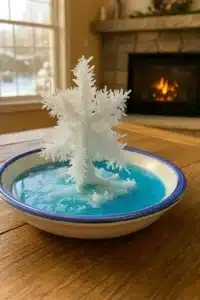Ever finish a workout and wonder, “Now what?” I used to reach for whatever I had lying around—until I learned how simple and satisfying it is to make my own protein shakes! According to a 2024 health survey, 60% of fitness enthusiasts say protein shakes are essential to their daily routine. Whether you’re bulking, slimming down, or just need a healthy snack, mastering the art of protein shake making is a game-changer. So, let’s blend up something amazing!
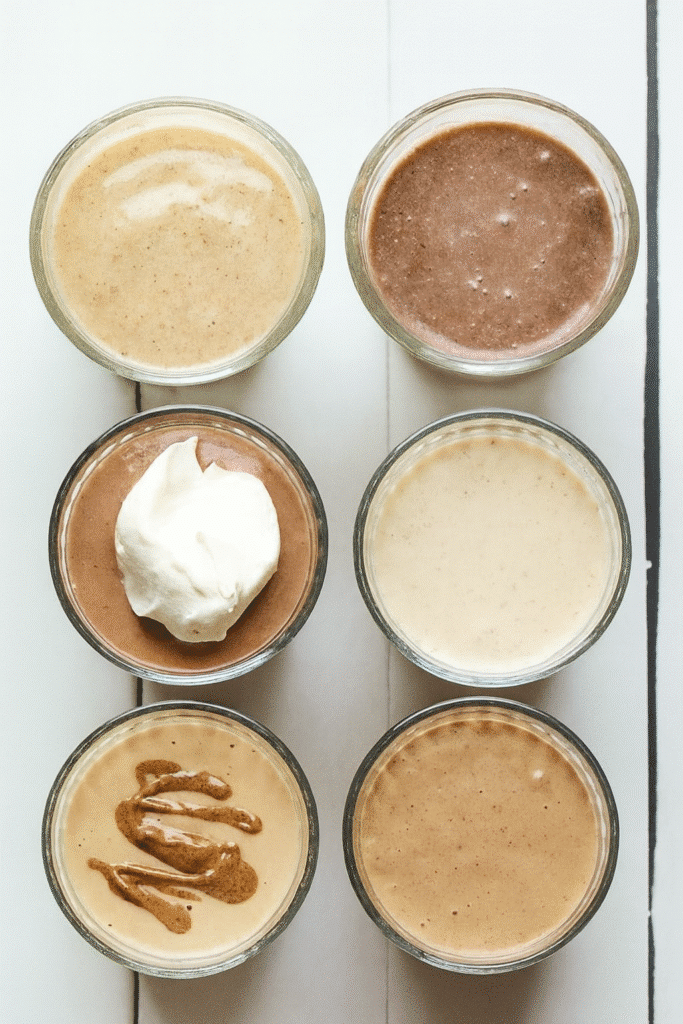
Best Ingredients for a Protein Shake
I remember the first time I tried to make a protein shake. I dumped in some random vanilla powder, used water from the tap, tossed in a bruised banana, and blended it all together. The result? It tasted like sweet cardboard. Lesson learned: ingredients matter—a lot.
Let me walk you through what I’ve learned since those early shake disasters.
Picking the Right Protein Powder
Whey protein is my go-to when I’m rushing post-gym. It blends like a dream and helps with muscle recovery fast. But my friend swears by casein because it digests slower, which she says keeps her full longer—especially useful when she’s doing intermittent fasting. If you’re vegan or dairy-sensitive, there are great plant-based options like pea, hemp, or brown rice protein. Some of them have an earthy taste, but mix them with the right stuff and they’re legit tasty.
Tip: Don’t cheap out on protein powder. Some brands are full of fillers and taste like chalk. Always check the ingredient list. Less is more here.
Liquid Base Choices Matter
Milk makes your shake creamy. I like unsweetened almond milk for a lighter option. Oat milk? Super smooth but has more carbs. And water? Honestly, it works in a pinch but can be bland unless you’re loading up with flavorful extras.
There was this one time I used orange juice as a base—don’t do it. It was like drinking a citrus-flavored science experiment. Stick to the classics until you’re confident.
Fruits & Veggies = Flavor + Nutrition
Bananas are a classic for a reason. They add creaminess and natural sweetness. I freeze mine ahead of time so I don’t have to use ice. Berries—especially blueberries and strawberries—are antioxidant powerhouses and taste amazing with chocolate or vanilla powders.
Spinach and kale? You won’t taste ’em if you blend them right, and you’ll sneak in some greens without even trying. Trust me, I was skeptical too.
Superfood Add-Ins: Tiny but Mighty
Here’s where shakes get fun. A spoon of peanut butter makes any shake richer. Chia seeds and flaxseed give you fiber and omega-3s. A bit of Greek yogurt adds protein and a tangy zip.
Pro tip: Cinnamon, vanilla extract, or even a dash of sea salt can make your shake taste like dessert.
Optional—but Awesome—Extras
Sometimes I toss in oats if I need a breakfast shake. They thicken it up and make it more filling. A scoop of cocoa powder transforms a boring vanilla shake into a chocolate fix. And if you’ve got a sweet tooth, a date or a drizzle of honey can help.
There it is—no more bland or clumpy shakes. The ingredients you choose make all the difference. You can keep it simple or go full-on smoothie bar. Just don’t forget: frozen bananas are your best friend.
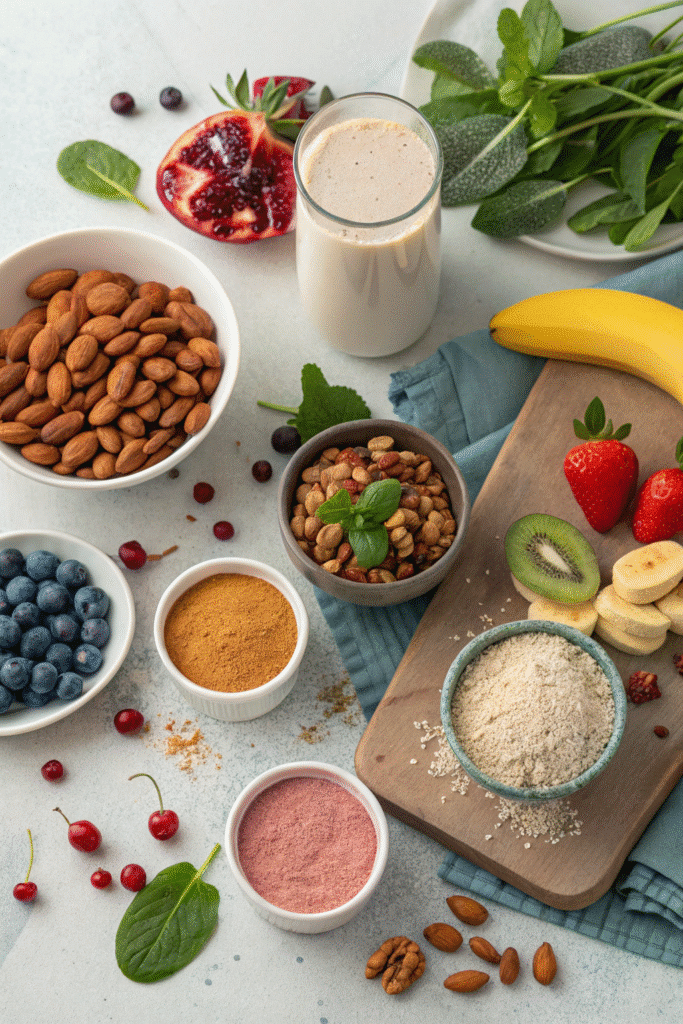
Equipment You’ll Need
Okay, I’ll admit it: I once tried making a protein shake by shaking everything in a mason jar. No blender. Just vibes. Spoiler alert—it did not work. Unless you like powder chunks and soggy oats stuck in your teeth, invest in some real equipment.
Blender Basics: What Works and What Doesn’t
First off, your blender doesn’t need to be fancy. But it does need to be able to crush ice and blend thick stuff like frozen bananas or peanut butter. I started with a $30 blender from a discount store—it worked fine for basic shakes, but struggled with tougher blends. Once I upgraded to a high-speed blender (mine was a refurbished Vitamix), everything changed. Smooth, creamy shakes every time. Plus, I could toss in nuts, seeds, even raw carrots if I wanted to get weird with it.
If you’re not into counter clutter, a personal blender like a NutriBullet or Ninja is gold. They’re small, quick, and the cup you blend in is the same one you drink from—less cleanup, more sipping.
On-the-Go Gear
When I was working two jobs, I lived off protein shakes in the car. That’s when I discovered portable blenders. Think: USB-charged mini blenders. They’re not as strong, but they get the job done if your shake’s not too thick. Plus, you can recharge them anywhere—even your car.
I also keep a couple of good shaker bottles around. Not all shaker bottles are created equal, though. I had one with a plastic ball inside that never mixed well. Then I found one with a stainless-steel spiral whisk—game changer. If you’re using just powder and water, a shaker is sometimes all you need.
Helpful Extras That Save Time
You don’t need these, but they help. Measuring cups (because guesswork leads to clumpy messes), a silicone spatula to scrape out every last drop (you paid for that protein, don’t waste it!), and freezer-safe containers for prepping fruit ahead of time.
Oh—and get a good bottle brush. Cleaning dried-up shake remnants from the bottom of a blender is peak frustration. Been there, done that, ruined a sponge.
Bottom line? You don’t need a fancy setup, but having the right tools makes shake life easier, faster, and way less messy. It’s all about finding what works for your routine.
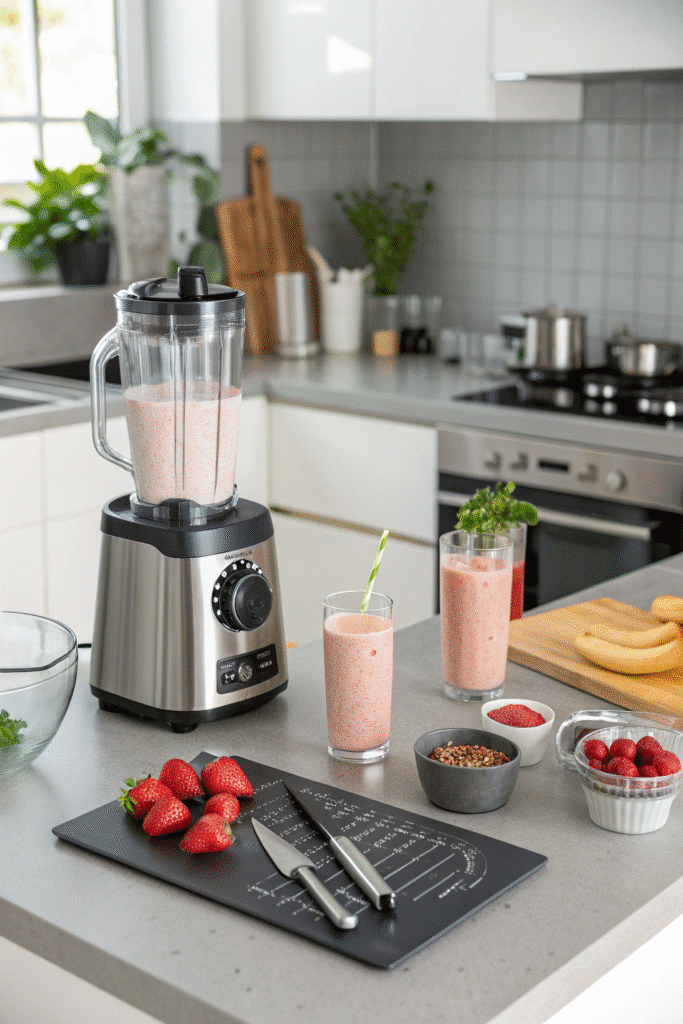
Step-by-Step Guide to Making a Protein Shake
If you’ve ever dumped a scoop of protein powder into a blender, added milk, hit “blend” and hoped for the best… yeah, same. But making a great protein shake isn’t just about tossing stuff together—it’s about how you layer and blend. I learned the hard way (hello, clumps and air pockets), so let me save you the trouble.
Step 1: Start with the Liquid
Always. Always. Always add your liquid first. I used to just throw everything in at once, but my blender would sputter and leave unblended blobs. Start with 1 to 1.5 cups of your chosen base—almond milk, oat milk, regular milk, or even just water. If I’m using a thicker protein powder or adding oats, I bump it up to 2 cups.
Step 2: Add Your Protein Powder
After the liquid comes the powder. One scoop usually does the trick (around 20–25 grams of protein), but I sometimes use two if I’m skipping a meal or just had a brutal leg day. I’ve also learned to not overpack the scoop. Trust the serving size, or your shake will be like sludge.
Pro tip: If you’re using a shaker bottle instead of a blender, put the powder in after the liquid. Otherwise, it sticks to the bottom and never mixes right.
Step 3: Add Your Extras
This is the fun part. Frozen banana? Absolutely. A tablespoon of peanut butter? Heck yes. I usually toss in some chia seeds or flaxseed for fiber. If I’m feeling adventurous, I add spinach—it blends in and you don’t taste it. I also love tossing in cocoa powder or a few frozen berries depending on my mood.
One thing: frozen fruit is key. It keeps the shake cold and gives it that thick, creamy texture. Ice works too, but I’ve found it waters things down.
Step 4: Blend It Smooth
Now blend it—30 to 60 seconds usually does it. If your blender’s struggling, stop and stir, or add a little more liquid. I used to think more blending meant a better shake, but over-blending can actually make it foamy and weird. You want it smooth but still thick.
Step 5: Taste and Tweak
This is where you become a shake artist. Too thick? Add more liquid. Too bland? A splash of vanilla or a pinch of cinnamon can work magic. Not sweet enough? Try a bit of honey or a Medjool date.
Then pour it into your favorite glass or to-go bottle, give it a swirl, and drink up!

Tips to Customize Your Shake
If you ever get bored of your protein shake, I’ve got good news—it doesn’t have to be a one-flavor-fits-all situation. I went through a phase where every shake tasted the same: vanilla powder, banana, almond milk. It was fine… until it wasn’t. That’s when I started experimenting, and now I’ve got a shake for every mood, goal, and craving.
For Weight Loss: Keep It Light but Satisfying
Back when I was trying to lose some belly fluff, I realized that calories add up fast. One tablespoon of peanut butter? Over 90 calories. So I started trimming the fat (literally) by swapping out nut butters for powdered peanut butter—it gives that same flavor without the calorie bomb.
Also, loading up with fiber helps. I started adding frozen cauliflower rice (don’t judge me!)—it thickens your shake without flavor and fills you up. A sprinkle of cinnamon gives it that warm, sweet feel without any sugar. Skip fruit juices and go for water or unsweetened almond milk to keep sugar and calories low.
For Muscle Gain: Go Big or Go Home
Trying to bulk up? Been there. You gotta add calories, but smart ones. I toss in rolled oats, full-fat Greek yogurt, and even avocado. Sounds weird, but it makes your shake super creamy and packed with good fats.
I once did a “super shake” challenge—banana, oats, 2 scoops of protein, peanut butter, and whole milk. Nearly 800 calories in a glass, and it kept me full for half the day. You just gotta play with the ratios until you find what fuels you best.
Vegan-Friendly Twists
I’ve dabbled with plant-based diets, and let me tell ya—vegan shakes can be just as good. Use a good pea or rice protein, almond or oat milk, and throw in hemp seeds for extra protein. Frozen mango and coconut milk together? Tastes like a tropical vacation.
Watch out for gritty powders, though. I learned to blend longer when using plant-based stuff—helps smooth it out. And flax eggs or soaked chia seeds? They add texture and nutrition.
Flavor Boosters & Sweeteners
Spices and extracts changed the game for me. Cocoa powder with banana = chocolate banana milkshake. Vanilla extract adds bakery vibes. I even tried matcha for a caffeine kick.
As for sweeteners, I use Medjool dates or a squirt of honey. Stevia works if you’re watching sugar, but it’s got that weird aftertaste unless balanced well.
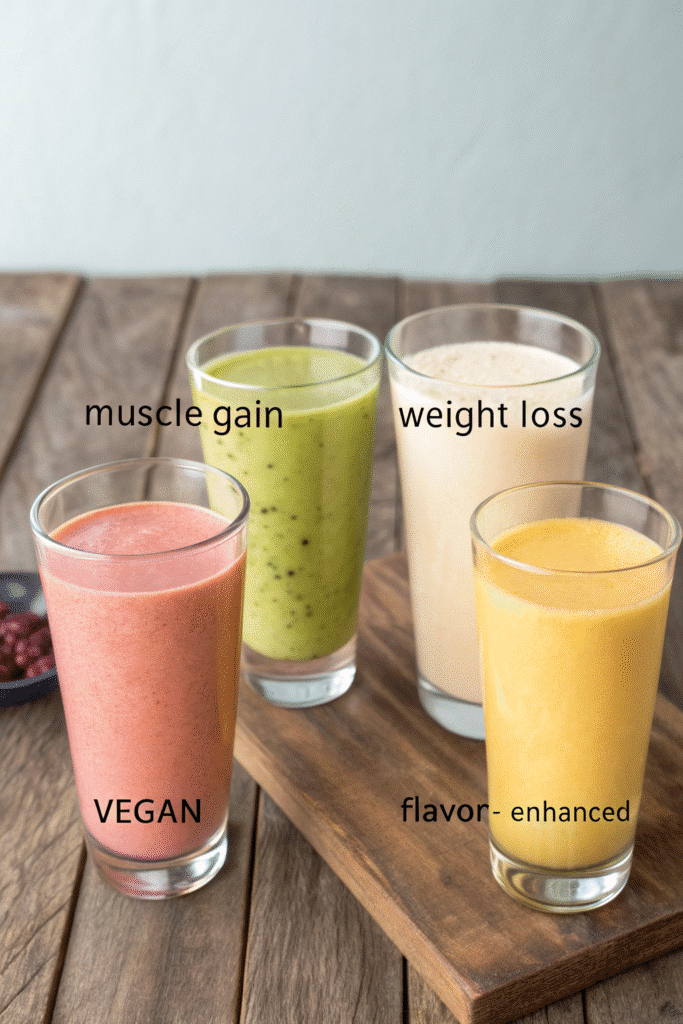
Common Mistakes to Avoid
Let me tell you something embarrassing—I once made a protein shake that was so thick I had to eat it with a spoon. And not in a cool “smoothie bowl” way. It was just a chunky disaster. That was the day I realized… there are wrong ways to make a shake. I’ve made enough of ’em to write a whole list, but here are the biggest slip-ups (and how to avoid ’em).
Mistake #1: Using Too Much Protein Powder
I get it. More protein = better, right? Wrong. I used to double scoop thinking I was getting double the gains. Instead, I got a stomach ache and a shake that tasted like liquid chalk. One scoop (around 20–25 grams) is usually enough for most folks. If you need more protein, add Greek yogurt or milk instead of just piling on the powder.
Plus, overdoing it with protein can mess with your digestion. I learned that the hard way after a week of constant bloat. Less is often more here.
Mistake #2: Skipping Real Food Add-ins
Early on, I made this mistake a lot. Just powder and water. Maybe milk if I was feeling fancy. Sure, it was technically a protein shake, but it didn’t satisfy me—and I was hungry an hour later. Once I started adding bananas, berries, oats, nut butter, and spinach, my shakes turned into real meals. And they tasted way better too.
Protein is important, but carbs and fats keep you full and energized.
Mistake #3: Blending It All Wrong
I used to throw everything in the blender at once, crank it up, and pray. Result? Powder stuck to the lid, frozen fruit bouncing off the blades, and ice chunks floating around. Not great.
Start with the liquid, then powder, then soft ingredients, and frozen stuff last. That way, everything gets pulled down into the blades, and you get a smooth blend every time.
And don’t under-blend! Give it a solid 30–60 seconds. If it sounds like your blender’s struggling, add a splash more liquid.
Mistake #4: Treating Shakes as a Full-Time Meal Replacement
I’m all for a good shake, but relying on them too much? Been there. One month I got lazy and swapped almost every meal for shakes. I felt tired, cranky, and bored outta my mind. Shakes are great as a supplement, not a replacement for whole meals all the time.
Food has textures, nutrients, and satisfaction that shakes just can’t replicate. Use shakes to support your goals—not replace your entire diet.
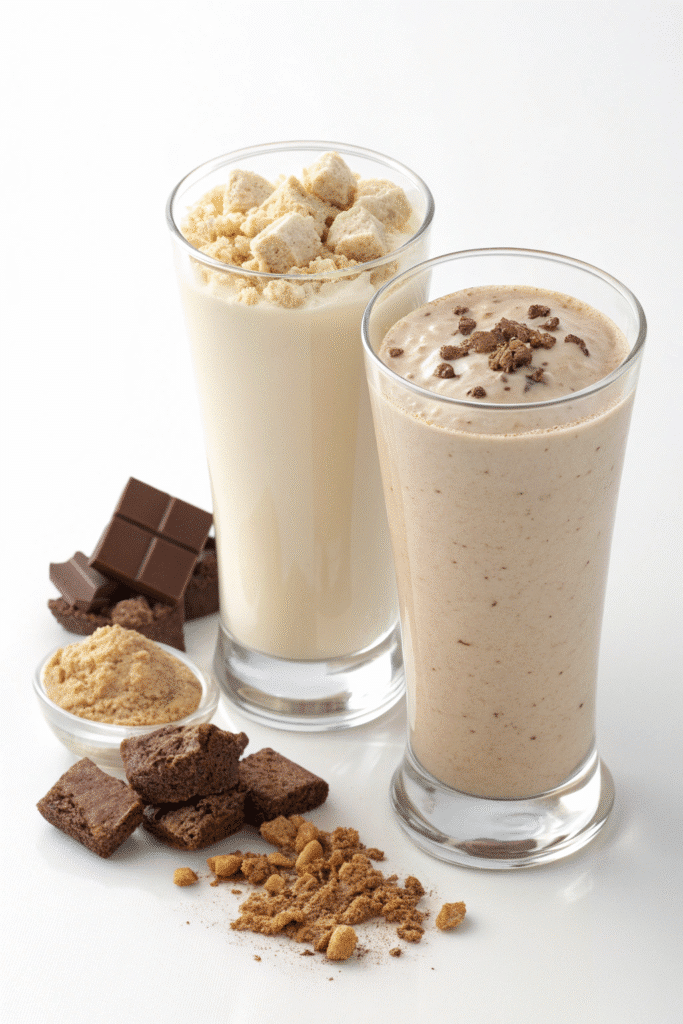
And there you have it—everything I’ve learned (sometimes the hard way!) about how to make a protein shake that’s not just nutritious, but actually something you want to drink. From picking the right ingredients and gear, to avoiding rookie mistakes, making your own shake is honestly one of the easiest healthy habits to build. And once you get your “go-to” recipe down? You’re unstoppable.
Some days I keep it classic—banana, peanut butter, vanilla whey. Other times I go full-on green monster with spinach, chia seeds, and matcha. But no matter what, I always tweak and experiment. That’s the fun part!
So here’s my challenge to you: try one new shake recipe this week. Play with flavors, test out new add-ins, or go bold and throw in something like beets (yeah, I’ve done it). Then snap a pic and share it on Pinterest! Not only will you inspire others, but you’ll build your own little digital recipe book too.
Got a killer combo you swear by? Post it and tag it. Let’s build a board full of flavor-packed, muscle-fueling, soul-satisfying shakes.
Happy blending! 🥤💪
Print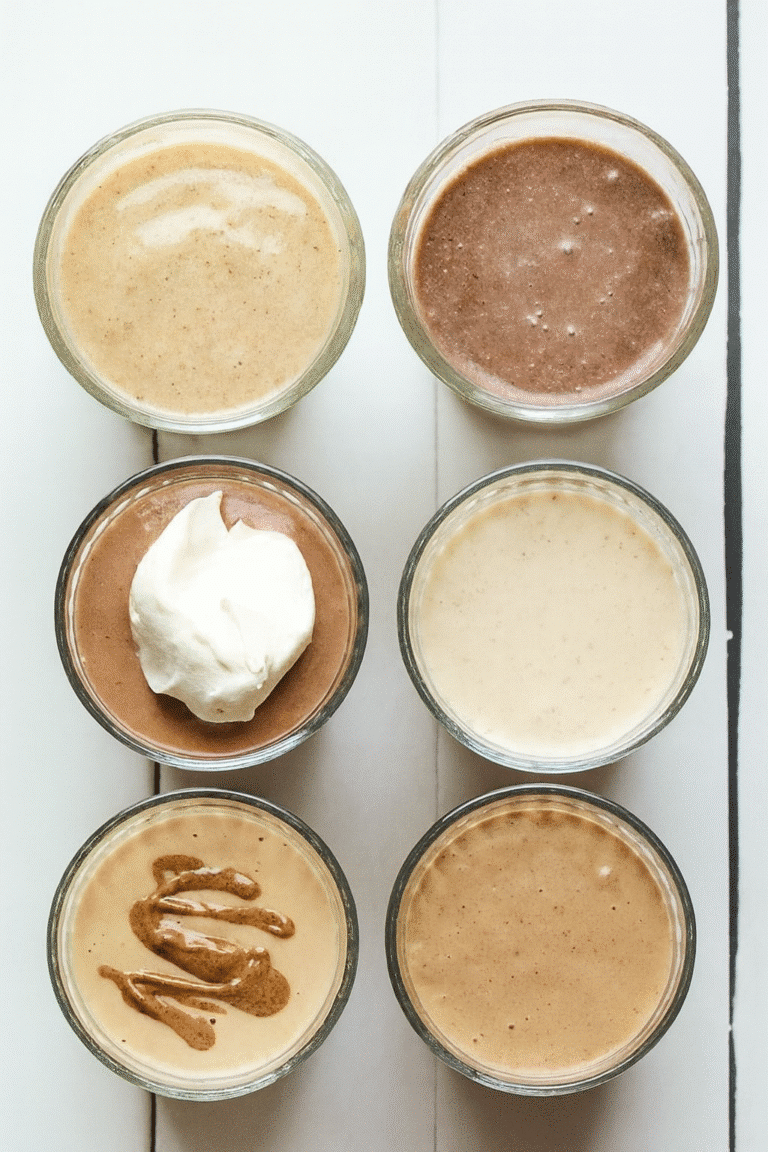
How to Make a Protein Shake at Home (2025 Guide)
Ever finish a workout and wonder, “Now what?” Mastering the art of protein shake making is a game-changer for fitness lovers. Whether you’re bulking, slimming down, or just need a healthy snack, here’s your ultimate guide to building a shake that tastes amazing and actually works.
- Total Time: 5 minutes
- Yield: 1 serving 1x
Ingredients
- 1–2 scoops of protein powder (whey, casein, or plant-based)
- 1–2 cups of liquid (almond milk, oat milk, regular milk, or water)
- 1 frozen banana
- ½ cup frozen berries (optional)
- 1 tbsp peanut butter or powdered peanut butter
- 1 tbsp chia seeds or flaxseed
- ¼ cup Greek yogurt (optional)
- Handful of spinach or kale (optional)
- 1–2 tsp cocoa powder, cinnamon, or vanilla extract (optional)
- 1 Medjool date or 1 tsp honey (optional for sweetness)
- Ice cubes (optional)
Instructions
- Start by adding 1–2 cups of your chosen liquid base to the blender.
- Add 1–2 scoops of protein powder (don’t overpack the scoop).
- Toss in frozen banana, berries, peanut butter, chia seeds, Greek yogurt, and greens if using.
- Add any flavor boosters like cocoa powder, cinnamon, or vanilla extract.
- Blend for 30–60 seconds until smooth and creamy. Stop and stir if needed.
- Taste and adjust thickness or sweetness as needed. Add more liquid if too thick.
- Pour into your favorite glass or shaker and enjoy!
Notes
For a lighter shake, use water or unsweetened almond milk. For extra calories, add oats, full-fat Greek yogurt, or avocado. Always layer ingredients in this order: liquid, powder, soft stuff, then frozen items.
- Prep Time: 5 minutes
- Cook Time: 0 minutes
- Category: Shake
- Method: Blender
- Cuisine: Fitness
Nutrition
- Serving Size: 1 shake
- Calories: 350
- Sugar: 10g
- Sodium: 200mg
- Fat: 10g
- Saturated Fat: 2g
- Unsaturated Fat: 7g
- Trans Fat: 0g
- Carbohydrates: 30g
- Fiber: 6g
- Protein: 25g
- Cholesterol: 30mg
